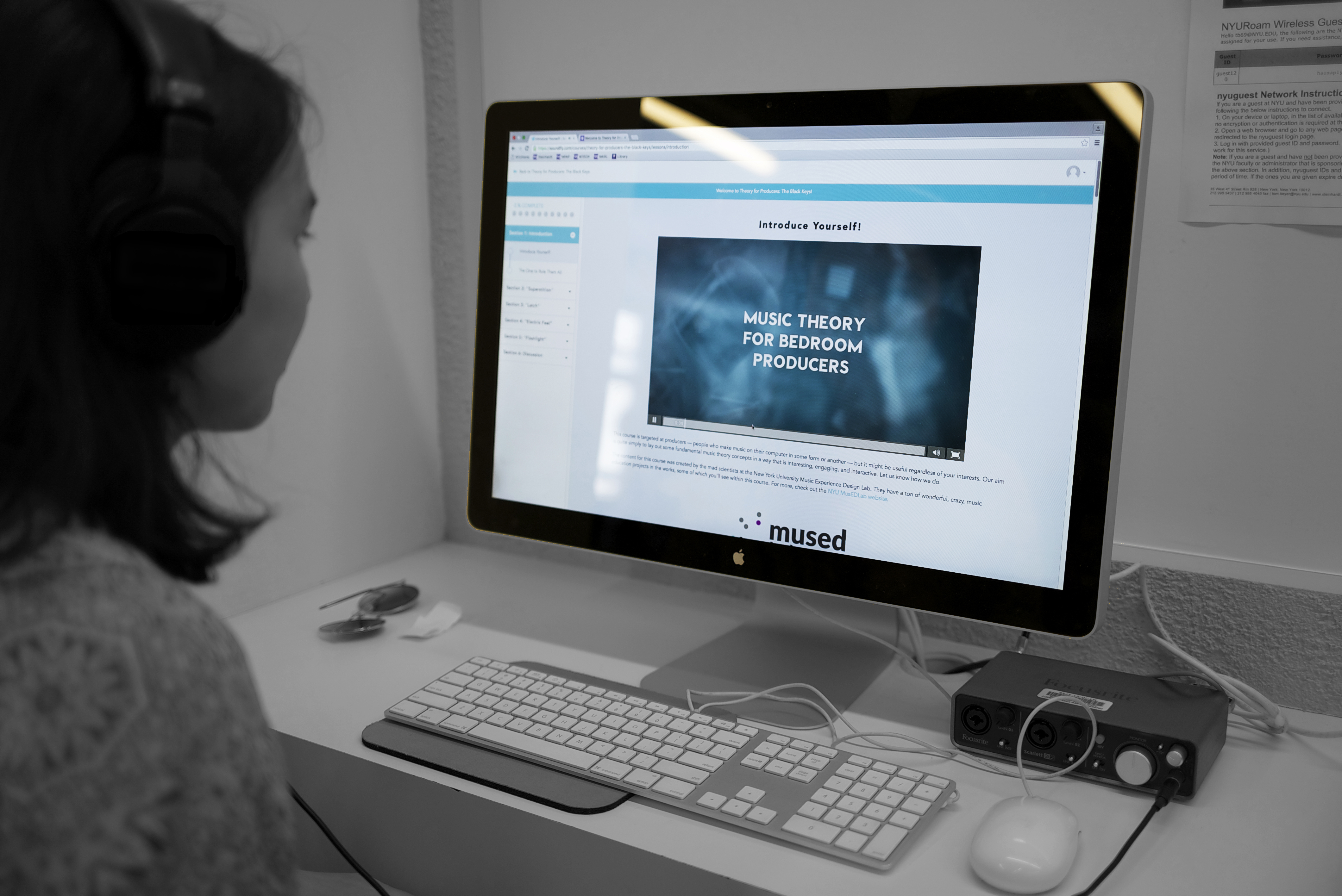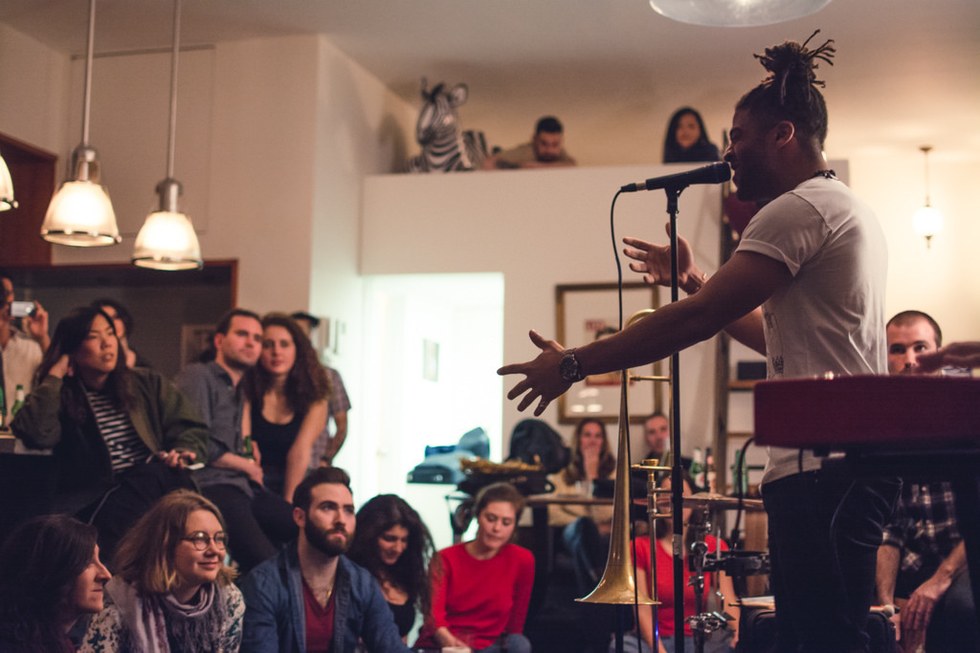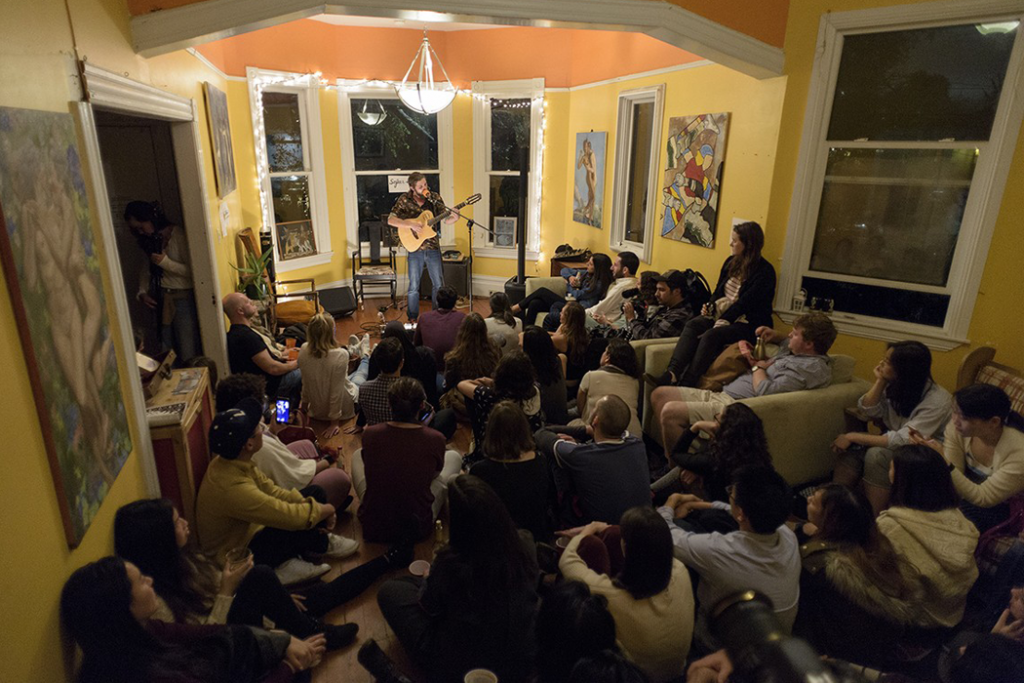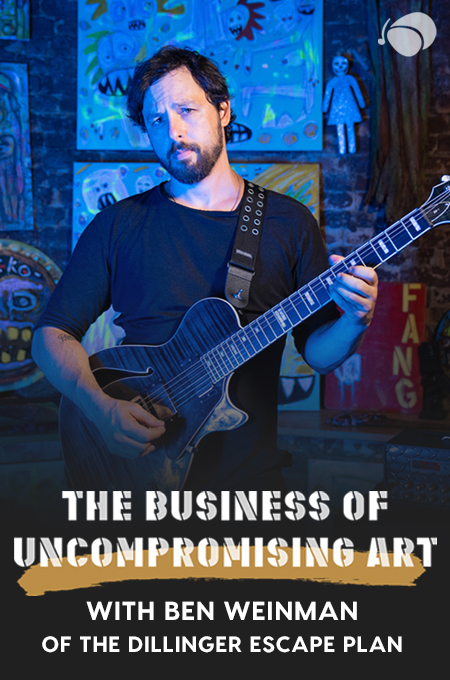+ Our brand new course with The Dillinger Escape Plan’s Ben Weinman teaches how to make a living in music without making sacrifices. Check out The Business of Uncompromising Art, out now exclusively on Soundfly.
House shows, and all sorts of DIY shows, are a great way to create an alternative, personalized space to hear live music in your community. If you aren’t near any good venues, need a place to host all-ages shows, or simply want to invite some people over to your house, apartment, backyard, roof, basement (you get my drift), to listen to great music, this can be an initiative that helps bring an underserved community of fans and artists together like nothing else.
The power of community makes any action possible in the world of DIY. Because house shows are pretty much always cheaper and more openly accessible, as well as more respectful in a lot of ways, than club shows, they provide the perfect space for community gatherings.
Sofar Sounds went from organizing secret house shows locally in London to organizing international musical gatherings in cities around the world every single night of the year!
Use this article as a guide to help you put together your first — or next — house show, and start building your local listening community around your taste in music!
Think About Logistics
First things first. Before you start planning your homegrown concert experience, you need to figure out what it is you’re attempting to do. In other words, what do you hope to achieve or gain from this experience? Here are some questions to help prepare you for the first stages of organization:
- Will the musicians be people you know, local artists, or touring artists you’re fans of?
- Should the bands promote the show themselves, or will you invite your friends and contacts?
- Are you actually comfortable having strangers in your home?
- Do you want to promote the release of an album or music video?
- After the show, will everyone leave or are you interested in throwing a party?
- Are you going to provide food for the bands or everyone in attendance?
These should help you start to conceptualize what type of house show you’ll throw.
+ Learn production, composition, songwriting, theory, arranging, mixing, and more — whenever you want and wherever you are. Subscribe for unlimited access!
 Know Your Limitations
Know Your Limitations
Now that you know what type of show you’re planning, you need to realistically evaluate your weaknesses. Nobody has the perfect home in which to throw a show, but everyone has the ability to make live music happen, and it’s important to remember that intimacy is a definite strong benefit of doing it this way!
There are five types of limitations that might hinder lofty aspirations or prevent you from doing certain things.
1. Sound
How loud can you be? This will depend on where you live, who your neighbors are, and where the music will take place. Everyone’s living situation is different, but a good rule of thumb is that if you’re doing anything more than an acoustic showcase, talk to any neighbors you share a wall with to let them know what’s going on.
Every city has its own noise ordinances. Learn the legal dB limit, and get to know a thing or two about wall insulation, sound proofing and diffusion, and neighborly relations!
2. Space
How many people can fit in the performance space? Make sure the musicians you’re booking will be able to sound good and perform well at your house show. Think about acoustics, where the band will set up, and where the audience will stand or sit.
3. Safety
In December 2016, a massive tragedy happened in Oakland, California, when the artist collective and studio space Ghost Ship burned down during a live music concert, resulting in the death of 36 people. Besides several factors that impeded early knowledge of the fire and the safe evacuation of showgoers, the building had no working sprinkler system. You may only be thinking of throwing small acoustic concerts for a handful of friends, but just remember that as soon as you invite people into your home, you’re responsible.
If your building is up to code for a residence, you may be fine to have people gather in your space up to a certain number. Make sure there are sprinklers, fire alarms, and safe pathways to clear exits!
4. Gear
What sort of gear and equipment do you have access to? It’s common for bands to bring their own gear to shows, but make sure you communicate what is expected. How will you stage the show? You’ll have to consider what you’ll need to set up.
5. Musicians
Who can you get to play at your house? You need to know bands and talk to musicians in order to book them. If you’re interested in throwing a house show, go to traditional shows at venues and talk to the bands afterward.
If you’re cold-emailing, try to be as polite as possible, and don’t make promises you can’t keep. For example, if you only expect about 20 people to show up, mention that it’s going to be a small gig instead of giving an artist false expectations of a packed house.

Choose a Suitable Location for the Show
If you don’t have a stage, that’s fine. Think about using lighting to delineate the “stage area,” and make sure that people will be able to see the band from wherever they’re sitting.
Consider these common locations for your house show.
Living Room
Having a show in your living room is probably the easiest and most logical choice. Living rooms are great for all kinds of intimate performances and breaking down barriers between performer and audience.
Backyard
Your backyard is often the place where you can fit the most people at your house, yet it’s also probably the loudest spot for your neighbors. If they’re on board, host full bands, jazz bands, electronic music, folk groups, really anything out back!
Roof
Throwing a show on a roof is similar to one in a backyard except that the sound travels much, much farther. Anything too loud is usually out of the question. Roofs are particularly good for sit-down shows due to the height danger, so think about doing film screenings, acoustic shows, jazz, and softer concerts like that.
Basement
If you live in a city and have a basement, that’s probably the way to go. You will be able to be loudest in a basement because of the way sound gets trapped under the floors and underground. Keep in mind, however, that unless you acoustically treat your basement, solo acoustic acts might have trouble sounding good.
Remember: You know your home and the music you’re booking. Follow your gut in regards to the space you choose.
Set Up the Performance Space
You’ve booked the bands, you know where everything is going to go, and all you have to do is set up. Regardless of what type of show you’re booking, make sure to talk about it early with the bands so you’ll be able to get all your ducks in a row. There’s nothing worse than having to scramble the day of the show for some piece of equipment you just found out you need. Ask the band or performers what they need to perform and what they’ll bring themselves.
Here are two things you’ll probably need regardless of who’s bringing what.
A PA System
You’ll most likely need to get a PA system (public address system), which is essentially a mixer and speakers. You can easily rent a PA system from a music store or ask one of your performers if you can borrow theirs. If you don’t know how to work the speakers, either learn or just ask a friend who does to be your sound engineer for the show.
If you’re only inviting solo performers for audiences of around 20 people, you probably don’t even need a microphone or a PA.
A stage plot
Have each band submit a stage plot, which is just a visual representation of how the band will be set up. This will help you figure out what each performer needs.

Remember that different types of shows have different requirements as far as equipment and setup. Here are the most common types of house-show performances and what each one needs to be a success.
Solo Acoustic Performer
If it’s your first house show, getting acoustic acts can really cut down on your workload. Just have the performer(s) set up somewhere, and invite your guests to gather around and listen.
Folk/Multiple Acoustic Performers
To hold a larger performance, you’ll need to set up some microphones, which means you’ll need a PA system, microphones, mic stands, XLR cables, and amplifiers for the performance. If the bands are using amplifiers, they’ll need outlets. Make sure there are plenty of places for people to plug in their gear. If you’re playing in a basement, roof, or your backyard, you might need to get some extension cables and extra power bars.
Electronic Solo Performer with a Track
This is very similar to the previous setup. If someone is performing to a backing track, then he or she will go directly into the PA.
Full Band
This type of show is the most work, but it can be the most exciting. This is where a stage plot becomes very useful. You’ll be able to see exactly what each band needs as well as what they’ll bring, some of which can be used by other the bands on the bill to save space and setup time.
Check that you have enough outlets, too. All instrumentalists will need outlets for their instruments, amps, and pedals, then factor in your speakers, PA, lights, etc.
Prepare for the Big Night
Now that you’ve booked the bands, picked the space, and know what type of equipment you’ll need, there are just a few more things for you to think about.
Move Furniture and Put Things Away
You should make sure that people will be comfortable and not cramped while they watch the show. Your home has to become a concert space.
If the performance is in your living room, move the furniture out of the way so people have a place to sit and stand. If it’s in your backyard, put away your stuff so it doesn’t feel cluttered. If it’s in your basement, make sure there aren’t a bunch of old boxes strewn all over the place, and please, please sweep the floors! Lastly, if you’re going to have people you don’t know in your house, strongly consider putting your valuables somewhere safe.
Make Cleaning Up Easy
Once everyone leaves, it’ll often just be you and the mess people leave behind. While there’s no way to totally escape cleaning up, you can do some things to make it easier, like put out extra trash cans. If you’re handing out cups, write people’s names on them so they’re more likely to reuse them for multiple drinks.
Also, if you have house rules or want to set certain boundaries for the show, just be clear and direct with the audience.
Come Up With a Post-Show Plan
Decide whether you want people to go home after the show or stick around for a post-show experience of some kind, like a pot-luck dinner. Make announcements throughout the evening, so people know what they should do.
Rev Up Your Creative Engines…
Continue your learning with hundreds of lessons on songwriting, mixing, recording and production, composing, beat making, and more on Soundfly, with artist-led courses by Kimbra, RJD2, Com Truise, Kiefer, Ryan Lott, and Ben Weinman’s The Business of Uncompromising Art.




